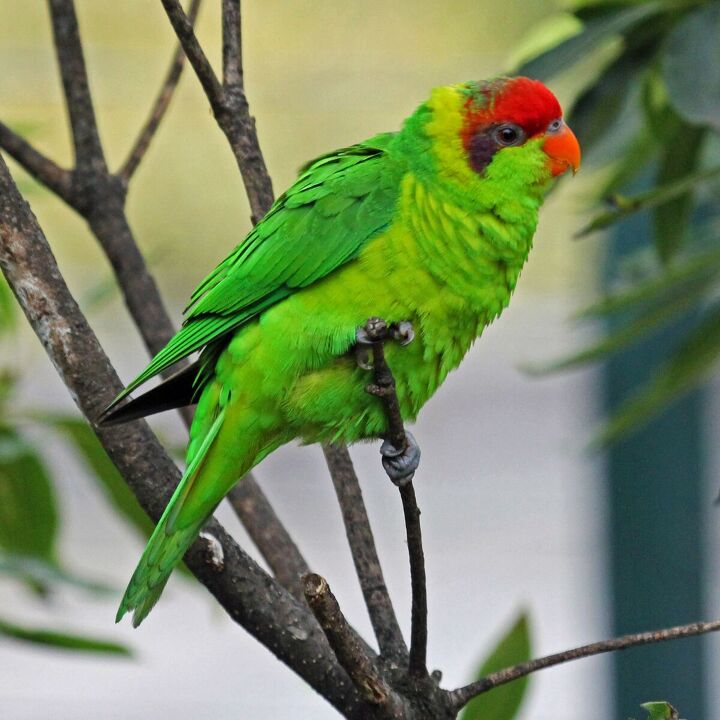Iris Lorikeet


About Iris Lorikeet
Fun, goofy, and always ready to play- the Iris Lorikeet is a delightful pet. As is common with birds of this size, Iris Lorikeet has a lot of energy and simply loves to hop around the house. Although rare to come across, their popularity is rising, and it’s all owing to their great personality. If you want a cute, cheerful and playful parrot with lovable personality – then the Iris Lorikeet is a perfect choice.
Did you know that Iris lorikeet has the strongest beak out of all breeds in this family?
Native Region/Natural Habitat
These small birds are found in a relatively small region, consisting of two islands in Southeast Asia – the Timor and Wetar islands. They thrive in the local monsoon forests, woodlands, and coastlines, at altitudes up to 1500 meters. They are occasionally seen on plantations as well. Sadly, due to increased illegal trapping, and deforestation, the Iris Lorikeet has become a nearly threatened breed. In the wild, these parrots show a shy and docile side – they nest in small flocks and prefer high, flowering trees to hide in.
The Iris Lorikeet shares common traits with others members of his family, like the Goldie’s and Varied Lorikeet, but this breed has its unique traits that really set them apart. The adults reach an average length of 8 inches (20 centimeters) and can weigh just 3 oz (75 grams). Although their small size doesn’t require a lot of space, it does mean they’ll have the energy to spare. Keep their activity level in mind when choosing their cage. The male and female are identical, making identification a bit difficult.
Lorikeets usually have a variety of natural calls. Some of these are shrill and can get loud when your pet is missing something important in the daily routine. There are also melodic chirps, whistles, and screeches. But all of this is, in general, quite tolerable. A pet parrot’s noise level can actually depend on the surroundings he is in. If the home is full of people and has a bit of a chaotic daily routine, you can expect the bird to be noisy. If the atmosphere in your home is quiet and laid-back, your pet is likely to act accordingly. This flexibility is not unique to Iris Lorikeet, though. A lot of common pet parrot breeds have a tendency to adapt and “look up” to their owner. Birds of a feather!
In respect to its size, the coloring of the Iris Lorikeet is a perfect match. With simple but vibrant colors, complete with a few distinct details, this little parrot is definitely a looker. The body is mostly various shades of green, with darker, tropical green on the wings and back, lime green on the chest and belly, and light green on the cheeks. The unique and colorful details of the Iris Lorikeet are found on their face. The large part of the forehead is bright red, with the top of the head being purple. There is a small red patch on the ‘chin’, and dark purple streaks at the end of their eyes. These unique markings are hard to miss, and they give the Iris Lorikeet just enough flair for them to stand out.
In comparison to other Lorikeets, this breed is not too showy or exotic-looking.
In their natural habitat, these little parrots have a varied diet. It mostly consists of unique local seeds and flora – flowering trees, tamarinds, plantations, and Eucalyptus growths. To begin, your pet should be fed a commercial seed mix for lorikeets or similar small parrots. These contain a lot of proteins that are only found in maize, rye, oats and millet seeds. Next, you’ll need to ensure they have all the essential micro and macronutrients in their diet, so add plenty of fresh fruits and some veggies. It’s important to ensure there are no big deficiencies in vitamins, which could cause feather related problems and other health issues.
Don’t think that all small parrots are fragile and weak. An Iris lorikeet that is loved and cared for, can easily live for up to 25 years. Just ensure all the optimal conditions, a balanced diet, and social interaction. You will need to make sure to avoid any possible neglect – look out after all of your pet’s needs. These fun and playful parrots will require your companionship to stave off boredom and depression
Iris Lorikeet is an avid chewer! Make sure to provide them with a lot of parrot toys and unsprayed branches.
It’s no secret that a pet parrot can bring a whole lot of fun into your daily life. The Iris lorikeet is the perfect example of this. Fun and friendly, these little parrots will not hesitate to play at every chance they get. Have in mind that they might not enjoy the company of other birds that much, so it’s up to you to keep your pet company. Engaging parrot toys will come in handy, too. These funny birds will love to zoom about the house, skittering here and there with goofy little steps. However you look at it, an Iris lorikeet has all the traits that make a great pet parrot – but you need to be prepared to go through a lot of searching in order to acquire one for yourself.
Photo credit: Dirk/Wikimedia Commons, DickDaniels/Wikimedia Commons, Evan Parker/Wikimedia Commons

A proud mama to seven dogs and ten cats, Angela spends her days writing for her fellow pet parents and pampering her furballs, all of whom are rescues. When she's not gushing over her adorable cats or playing with her dogs, she can be found curled up with a good fantasy book.
More by Angela Vuckovic
























